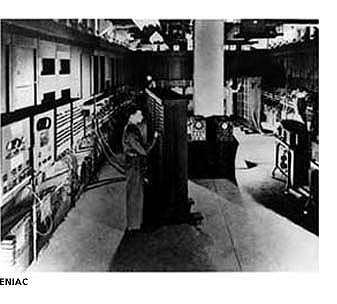
technology
Over 50 years ago, ENIAC's 18,000 vacuum tubes flickered to life at Penn, casting a glow that many scholars attribute to the dawn of the information age. The Electronic Numerical Integrator And Computer (ENIAC)--the world's first programmable, multipurpose electronic computer--was a 30 ton, 1,800 square foot behemoth that filled a whole room in the Moore School Building. Today, Penn students and faculty have etched that monster's circuitry on a sliver of silicon less than a quarter inch square: ENIAC-on-a-Chip. Smaller, smarter, faster: What does it all mean?Computers have come to hold a critical place in Penn's recent history in more ways than one. "Computing is vital to every aspect of Penn's mission," declares the 1996-2000 strategic plan for the Office of Information Systems and Computing. That document goes on to note how computer and information technology supports all nine goals put forth in the Agenda for Excellence, Penn's strategic plan.
Computers have become an even more essential tool for undergraduates than the typewriter used to be. Alumni may be surprised to learn that Penn students no longer stand in long departmental lines to register for courses at the
beginning of each semester. Nor do they need to traipse to the library to see if a book is checked out--or to reserve the book, if it is. These and other formerly onerous and time-consuming chores can now be accomplished in minutes on a dorm room computer. And with the implementation of Penn's 21st Century Wheel Project, indispensable academic advising services are available to students in their rooms. Online help with math, writing, research, and technology can now be obtained late at night, when students traditionally write papers and do homework. Even the DP can be read online (http://dailypennsylvanian.com/).

Today, information can be anywhere and everywhere--instantly. With e-mail, students and faculty maintain ongoing conversations outside the classroom, each making their contribution to the discussion at different times and from different places. Researchers use computers routinely to explore new, formerly inaccessible realms, and they are also looking at some old subject areas in new ways. The only guessed-at results of these studies are contributing to a changed future that is just over the horizon. A dramatic transformation, driven by technology, is underway in how students learn, how professors teach, how researchers investigate, and how colleges and universities serve
society. In this issue of the newsletter, we present glimpses of some of the changes wrought by technology at Penn.